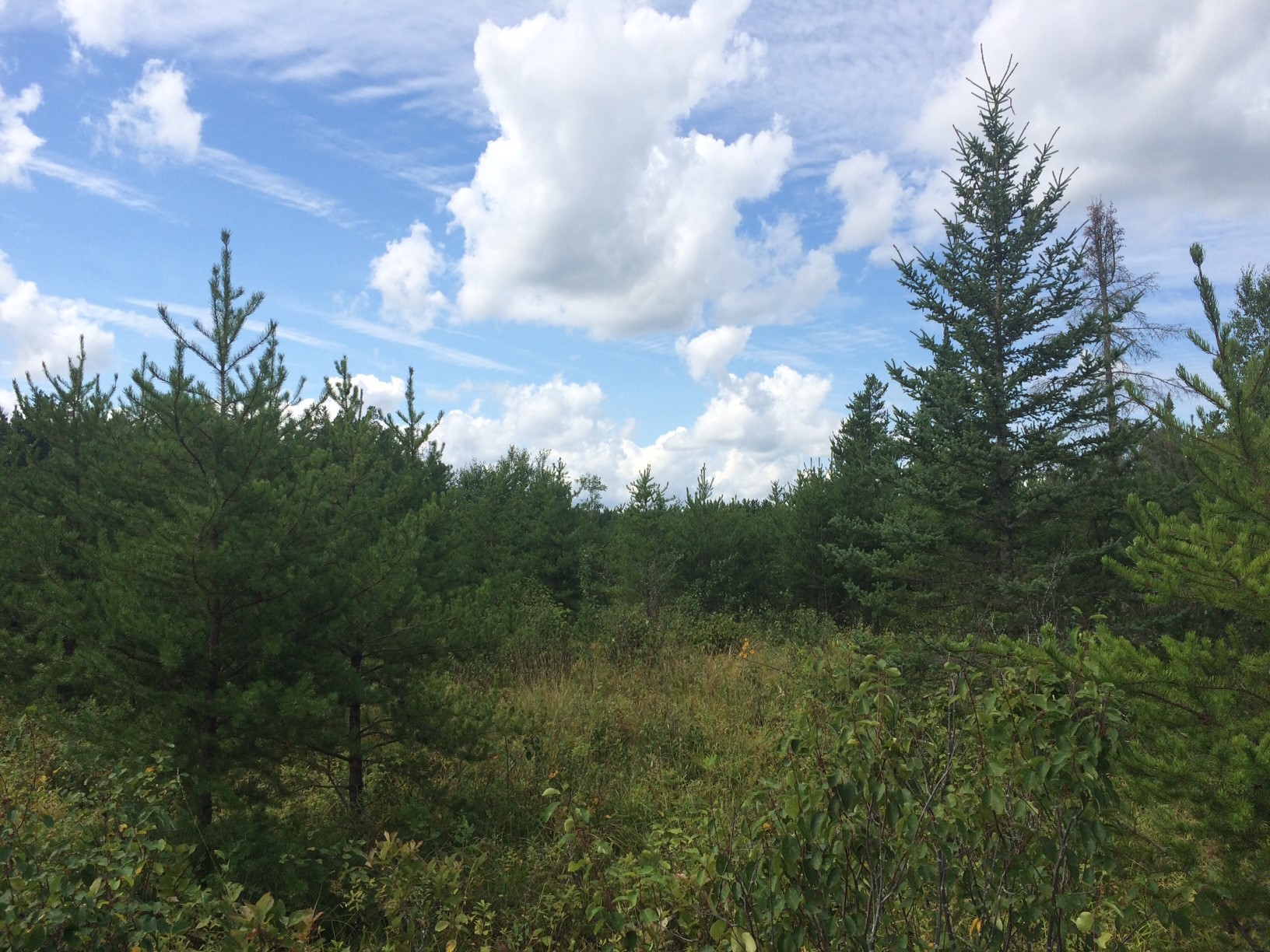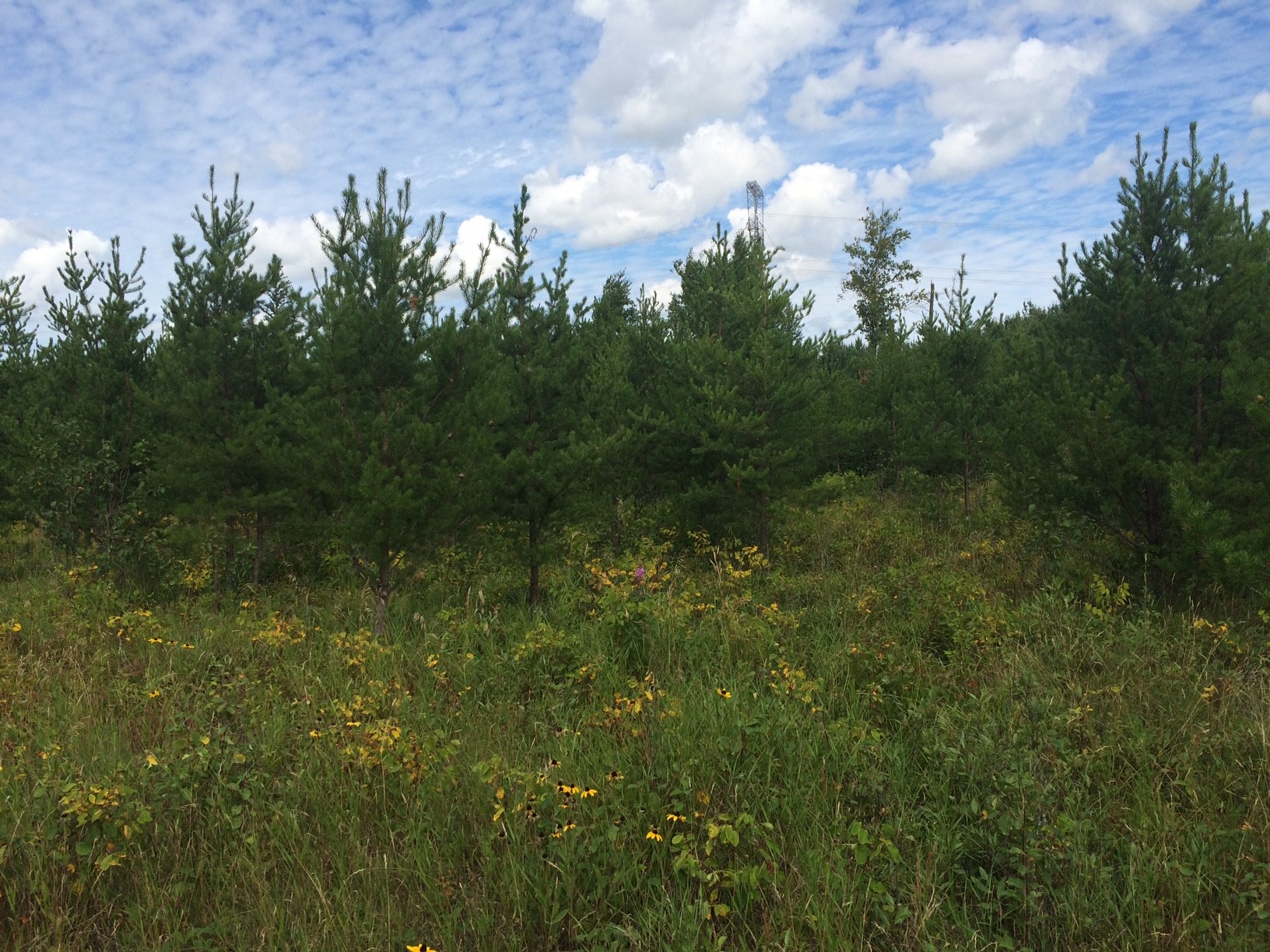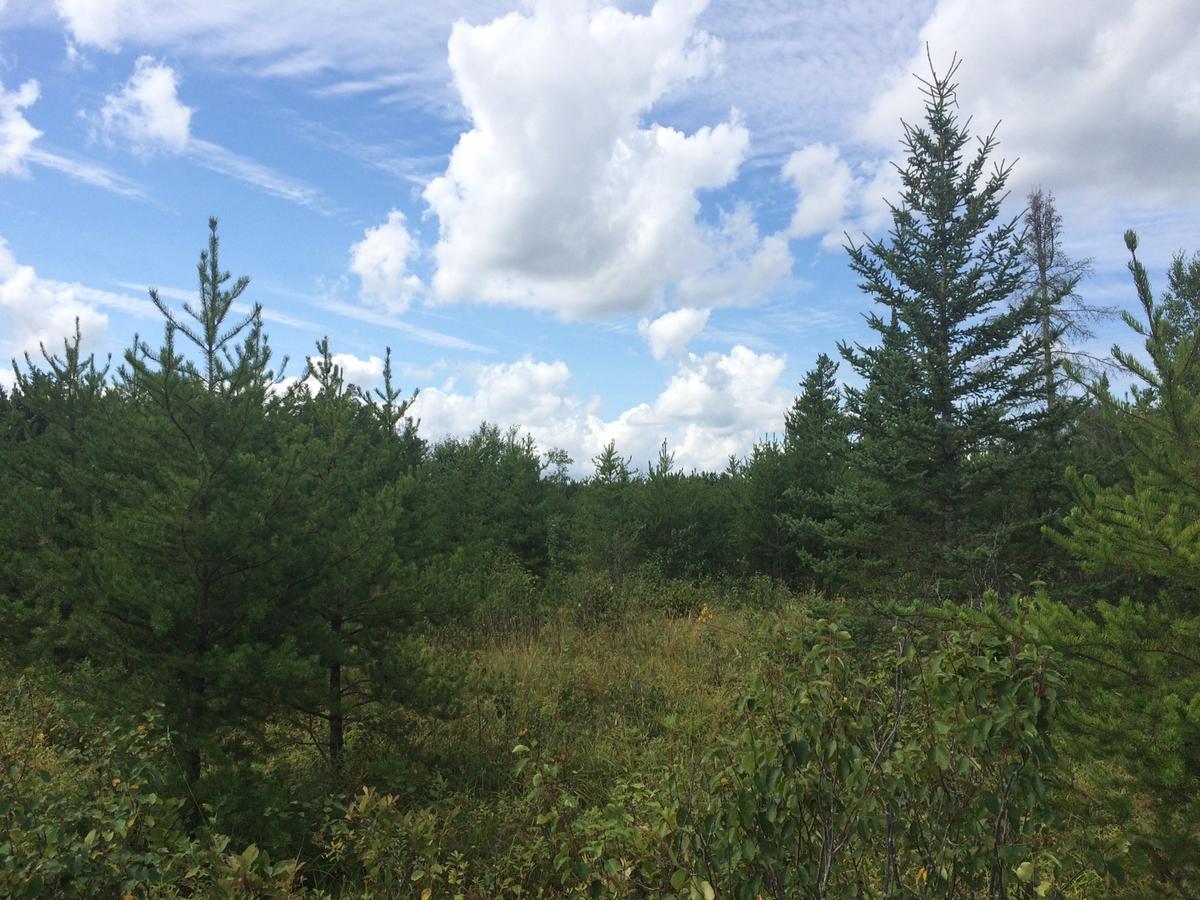Silviculture Objective(s)
Clearcut harvest pine and regenerate stand back to pine cover type.
Pre-treatment stand description and condition
Stand establishment and management history:
Stand was likely established naturally following a disturbance in the early 1900s. 1988 Forest Inventory data shows that the main species was 9” DBH jack pine which was 73 years old. The jack pine averaged 60 feet in height and 28 cords per acre. The basal area of the stand was 110. Other species were balsam fir at 5” DBH and 1 cord per acre, large jack pine at 15” DBH and 3 cords per acre, and red pine at 16” DBH and 2 cords per acre. The shrub layer was reported as a combination of hazel and or honeysuckle, mt. maple, dogwood, juneberry, or upland willow that was fairly uniform in distribution and low density. A high amount of deer browse was also recorded.
The 2003 cruise notes show a loss in timber volume from 34 cords an acre in 1988 to 26 cords an acre in 2003. This loss in volume was likely caused due to the stand being over mature.
Silviculture Prescription
The stand was clearcut harvested with boundaries marked with paint. 20 acres of the 24 acre stand were harvested with the remaining 4 acres reserved. All red pine and nonhazardous snags were reserved within the harvest area. Cutting was allowed between freeze-up and march 1st while cutting outside of the period required forester approval. The slash was to be lopped and scattered evenly within the harvest area. The site was then to be planted the following year back to pine.
What actually happened during the treatment
Harvest operations began in June 2004 and were completed by the end of the month. The original prescription involved planting to pine but instead the stand was mechanically scarified and aerial seeded. Aerial seeding was chosen over planting as it suited the site better than planting. The site was scarified in October of 2004 using a Leno (Patch Scarification) which made two passes over the site. In April 2005 the stand was aerial seeded at 2 ounces per acre to supplement seed from the scattered slash.
Post-treatment assessment
Regeneration checks:
2008:
|
Species |
Seedlings per acre |
Stocking % |
Average Height (Ft) |
Min Height |
Max Height |
Free to Grow % |
|
Jack Pine |
545.45 |
63 |
1 |
1 |
1 |
50-74 |
|
Hazel |
454.55 |
9 |
2 |
2 |
2 |
na |
2010:
|
Species |
Seedlings per acre |
Stocking % |
Average Height (Ft) |
Min Height |
Max Height |
Free to Grow % |
|
Jack Pine |
755 |
100 |
2.5 |
2 |
3.5 |
75-100 |
|
Balsam Fir |
11 |
11 |
3 |
3 |
3 |
75-100 |
|
Choke Cherry |
156 |
55 |
2 |
1 |
3 |
na |
|
Hazel |
211 |
55 |
2.5 |
2 |
3 |
na |
|
Willow |
133 |
33 |
3 |
2 |
4 |
na |
2015:
|
Species |
Seedlings per acre |
Stocking % |
Average Height (Ft) |
Min Height |
Max Height |
Free to Grow % |
|
Jack Pine |
950 |
100 |
7 |
3 |
8 |
75-100 |
|
Paper Birch |
30 |
28 |
15 |
10 |
15 |
75-100 |
|
Quaking Aspen |
200 |
5 |
11 |
10 |
15 |
na |

Figure 1: Jack pine regeneration.
Plans for future treatments
Monitor growth and harvest when stand has reached rotation age
Costs and economic considerations
Spring 2003 the stand was cruised and appraised at 440 cords
December 2003 the stand was bid up 71% at auction for a value of $19563.20
June 2004 harvest operations began
October 2004 stand mechanically site prepped for a cost of $1362.98
December 2004 final scale reported a underrun of 1.3%
April 2005 stand was aerial seeded at a cost of $387.59
Hand planting sites is known to provide more consistent stocking but at an added cost in comparison to aerial seeding. Using mechanical site preparation with aerial seeding may provide a way to obtain desired stocking with a lower cost than that of hand planting.
Seeding cost 2005
Site prep: $68.15/acre
Seeding: $19.40/acre
Total cost per acre $87.55
Planting cost 2005
Site prep: $68.15/acre
Planting: $190/acre
Total cost per acre: $258.15
Summary / lessons learned / additional thoughts
The aerial seeding with mechanical site preparation was successful in producing adequate stocking level, trees per acre, and free to grow status for jack pine throughout the site. If only one regeneration check was done in 2008 it would have produced results that would have labeled the stand for future treatments (such as supplemental planting). While the 2010 and 2015 regeneration checks resulted in sufficient regeneration, this emphasizes the need for multiple regeneration checks over the first few years of a stand’s life.

Figure 2: Jack pine regeneration.
